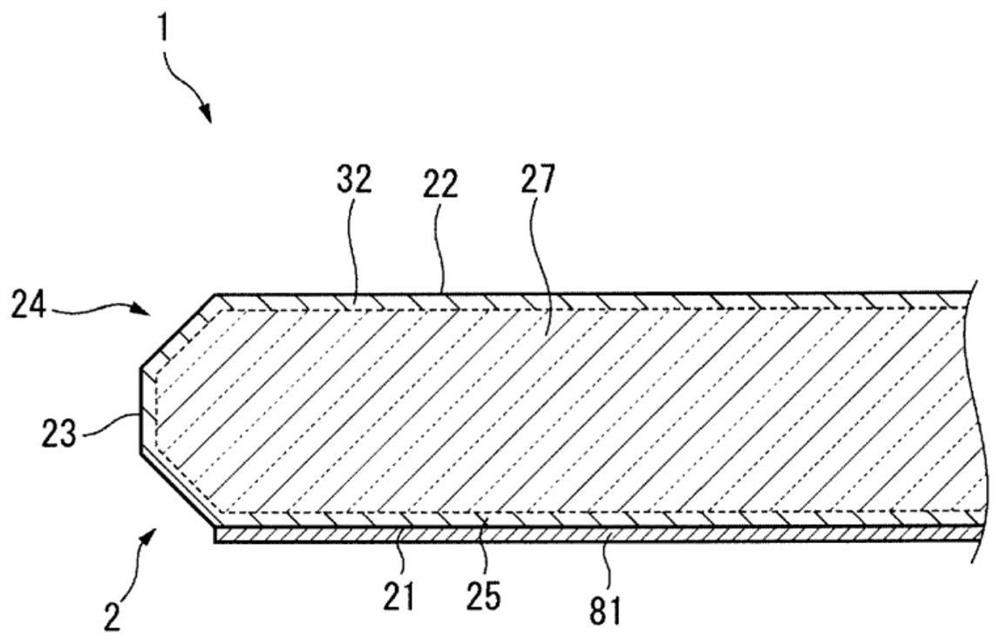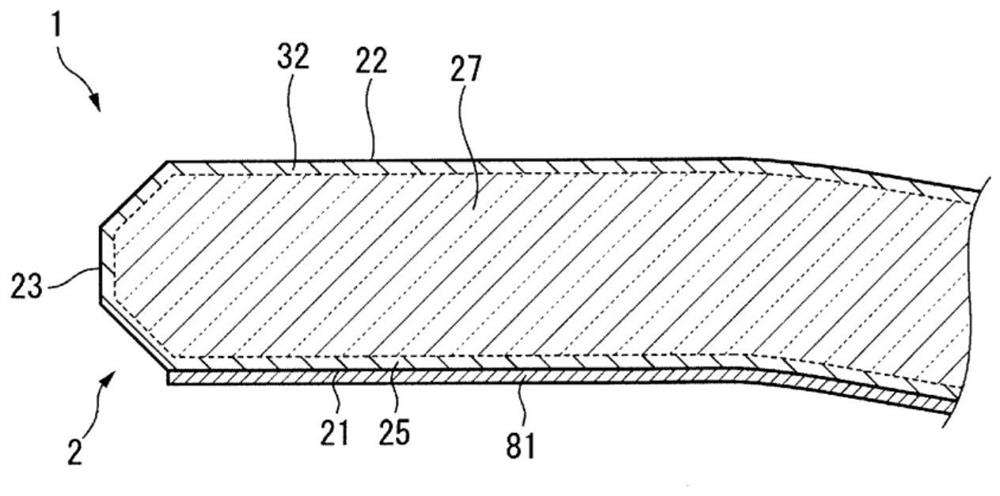Cover glass, and in-cell liquid-crystal display device
A technology of cover glass and strengthened glass, which is applied in the direction of glass/slag layered products, chemical instruments and methods, coatings, etc., can solve the problems of white turbidity of liquid crystal screen and electrification of liquid crystal elements, so as to prevent white turbidity and inhibit Effect of triboelectric charging and high mobility
- Summary
- Abstract
- Description
- Claims
- Application Information
AI Technical Summary
Problems solved by technology
Method used
Image
Examples
Embodiment
[0227] Next, examples of the present invention will be described. The present invention is not limited to the following examples.
[0228] Cover glasses with various characteristics were produced, and the amount of charge and the degree of clouding when incorporated into the device were determined. The specific order is as follows. Examples 1 to 3 are examples, and examples 4 to 5 are comparative examples.
example 1
[0230] First, as glass before chemical strengthening, glass having a composition shown in Example 1 in Table 1 was produced by a float process to obtain a 0.7 mm glass plate. The obtained glass is cut into length 100mm and width 120mm respectively (the area of the 1st principal surface is 12000mm 2 ), length 100mm and width 180mm (the area of the first main surface 21 is 18000mm 2 ), 100mm long and 260mm wide (the area of the first main surface 21 is 26000mm 2 ).
[0231] Next, these glasses are chemically strengthened. The conditions of chemical strengthening performed chemical strengthening by immersing in 100 weight% potassium nitrate molten salt of temperature 420 degreeC for 8 hours.
[0232] After cleaning the strengthened glass, a solution obtained by diluting Afluid S-550 manufactured by Asahi Glass Co., Ltd. with fluorine solvent ASAHIKLIN AC6000 manufactured by Asahi Glass Co., Ltd. to 0.1% by mass was applied to one surface by spraying to form an anti-finge...
example 2
[0250] As the glass before chemical strengthening, the raw material was prepared so that it might become the glass of the composition shown in Example 2 in Table 1, it melt|dissolved, and after flowing out into about 300 mm square block, it cooled slowly and obtained the glass body. Thereafter, cutting and cutting were performed to form a plate shape of 100 mm in length, 120 mm in width, and 0.7 mm in thickness; 100 mm in length, 180 mm in width, and 0.7 mm in thickness; 100 mm in length, 260 mm in width, and 0.7 mm in thickness.
[0251] Next, these glasses are chemically strengthened. The conditions of chemical strengthening performed chemical strengthening by immersing in 100 weight% potassium nitrate molten salt of temperature 450 degreeC for 3 hours after immersing in 100 weight% of sodium nitrate molten salt of temperature 450 degreeC for 3 hours.
[0252] Thereafter, the cover glass of Example 2 was produced under the same conditions as in Example 1.
PUM
| Property | Measurement | Unit |
|---|---|---|
| area | aaaaa | aaaaa |
| depth | aaaaa | aaaaa |
| area | aaaaa | aaaaa |
Abstract
Description
Claims
Application Information
 Login to View More
Login to View More - Generate Ideas
- Intellectual Property
- Life Sciences
- Materials
- Tech Scout
- Unparalleled Data Quality
- Higher Quality Content
- 60% Fewer Hallucinations
Browse by: Latest US Patents, China's latest patents, Technical Efficacy Thesaurus, Application Domain, Technology Topic, Popular Technical Reports.
© 2025 PatSnap. All rights reserved.Legal|Privacy policy|Modern Slavery Act Transparency Statement|Sitemap|About US| Contact US: help@patsnap.com



